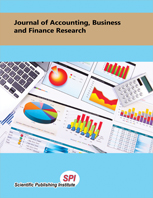The trilateral game of privacy perception, financial regulation and central bank digital currency issuance
DOI:
https://doi.org/10.55217/102.v16i2.644Keywords:
CBDC, Financial regulation, Game theory, Privacy perception.Abstract
The goal of this study is to clarify how privacy protection affects the insurance of central bank digital currency (CBDC). By constructing a tripartite game model involving consumers, commercial banks, and regulators, this paper explores the impact of privacy protection on the issuance of CBDC. The findings show that privacy protection is critical to ensuring successful adoption of CBDCs. The central bank must strike a balance between protecting user privacy while also regulating usage and ensuring convenience for users. However, due to opportunistic behavior by both commercial banks and consumers during this process, negative reactions are possible. Based on the findings of this research, it is suggested that central banks should encourage commercial banks to participate in CBDC issuance by promoting appropriate data sharing and offering guidance. Additionally, they should focus on consumer education and expectation management to promote CBDC adoption. Commercial banks must also embrace digital transformation and adapt to the changing financial landscape to remain competitive while providing innovative financial services to customers.


